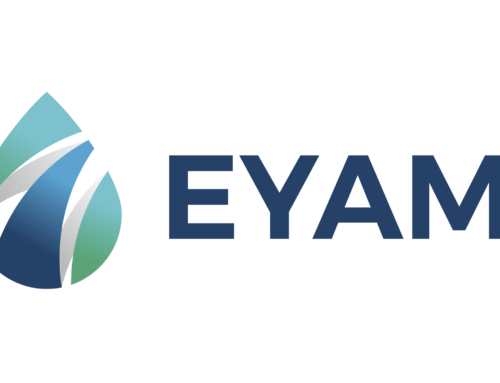Biotech Platforms and Value Creation
October 31, 2022
By Ryan M. Thomas
|
This month, we’ll be looking at the business opportunity of having both a proprietary vaccine platform and the Jennerator to design next generation vaccines. But first, the top 5 highlights from a busy month of news:
The idea of the value of a vaccine platform may still be a bit hazy to some, so let’s use an example that might be more familiar: Netflix. (Streaming) Platforms Netflix was founded in 1997 with the idea of doing for movies what Amazon was doing for books – at the time. With the advent of DVD’s, Netflix co-founder Marc Randolph believed that the DVD was just the right size to be able to ship via mail. So, they set-up a website, started marketing and began renting DVDs through the mail. Soon after, Jeff Bezos offered $16M to buy the company. The Netflix co-founders politely rejected the offer and carried on. With the growing popularity of DVD players, Netflix’s business boomed. Blockbuster, seeing a growing competitor, began to also offer DVD sales. In 2007, with the improvement of internet speed, Netflix saw an opportunity to leapfrog Blockbuster to launch their own streaming service. They now had their own platform. Building upon this platform, Netflix would then lease the rights to some of the most popular movies, and later television shows. That same year, then Blockbuster CEO, Jim Keyes said, “Neither RedBox nor Netflix are even on the radar screen in terms of competition.” Three years later, Blockbuster declared bankruptcy. In 2021, Netflix reached a market capitalization of $265B. Blockbuster, who once had more than 80,000 employees, is now just a distant cultural memory. Platform Economics Netflix created a platform (website and later an application) and delivery system (streaming) for which products (movies and television shows) could be consumed. Originally the platform was novel because it was user friendly, intuitive and used machine learning to improve discovery of new movies and shows based upon viewer interests, previously consumed content, and ratings. This machine learning platform increased viewer time on the platform and made Netflix’s perceived value even higher to the viewer. |
 |
|
Netflix had created a new vertical for content producers who now happily licensed their content to Netflix. Over time, the streaming platform was shown to be a far superior experience for viewers who could 1) watch on demand 2) avoid annoying advertisements and 3) pay a small monthly subscription – as opposed to the much higher cable model. Creating a superior platform allowed Netflix to rapidly consolidate the online streaming market in which it has been a leader since its launch in 2007. Platform Economics + Content Creation are King Today, content producing companies like HBO and Disney have learned from Netflix’s model. Just last year, Disney canceled $1B in streaming licensing contracts in order to consolidate their own platform, Disney+. Why did Disney sacrifice $1B in revenue? Because they saw the multiplicative value of platform economics and realized that they also owned something that Netflix couldn’t make fast enough: content. Netflix, a newcomer, had grown a market cap larger than the nearly 100 year old iconic brand, Disney, but their lack of content creation was a severe liability. |
 |
|
In three short years, Disney, through its Disney+ platform, its majority ownership in Hulu and ESPN+ platform, now has more monthly subscribers than Netflix. With content producers increasingly launching their own platforms, the pressure is on Netflix to deliver on their promise to also become a consistent content producer. It’s clear that iconic content producers have market power. If they also have access to capital, they can replicate the benefits of existing platforms and consolidate around their own content. A platform and content are now king. Biotech Platforms There are 3 critical components to the development of a platform biotech:
Differentiated Technologies Drs. Jefferies and Ribeca have developed a vaccine design platform (think content generation) using Dr. Jefferies rules for vaccine design, machine learning tools developed by Dr. Ribeca, and access to tremendous amounts of sequenced data on viruses. Eyam’s unique Jennerator design platform has the ability to design vaccines with the aim of creating long lasting protection against current and future strains of a virus. Under normal circumstances, vaccine design takes months, is costly and is a labor intensive process. With Eyam’s Jennerator, vaccine design takes weeks and with minimal cost and oversight. Strong IP Protection Both Eyam’s self-amplifying vaccine platform and Jennerator design platform have unique and patentable differentiators. Technologies that are scalable and target agnostic Eyam’s self-amplifying platform and Jennerator were designed to solve many of the shortcomings of the first generation mRNA platforms to improve scalability: a lower dose (1/100), faster vaccine design, and longer lasting protection. Eyam’s Platform and Content Machine Last month, I shared some additional details about Eyam’s platform. Below are a few key excerpts: “At Eyam, we’ve developed a proprietary vaccine platform with novel viral vectors that improve vaccine delivery and protein expression. Combined with our self-amplifying technologies, that means that we can quickly design and code a payload to protect and defend against novel, emerging diseases so that our immune systems can be protected long-term against new threats.” And: “Eyam’s vaccine platform allows for a “plug and play” physical framework that can be used when developing vaccines for emerging infectious diseases. Using a base carrier, or “vehicle,” such as a nucleic acid, viral vector, or liposome, permits the platform to work interchangeably for various diseases. Extending the definition to pharma, a vaccine platform is any underlying technology — a mechanism, delivery method, or cell line — that can be used to develop multiple vaccines.” I also shared how “plug and play” vaccines are developed: |
 |
|
Marrying Eyam’s vaccine platform and Jennerator platform gives Eyam the competitive advantage of not only owning a vaccine platform (a delivery mechanism), but also a platform to quickly design new vaccines (content). This double threat provides Eyam with the flexibility to pursue multiple paths to value creation and profitability. The first, is by taking the “Drug Developer” path. This path has Eyam designing and testing vaccines and therapeutics on its self-amplifying vaccine platform, testing them in animals and taking them through clinical trials. As the chart below shows, this path leads to partnerships (and royalties) to take the vaccine to market, an acquisition, or by remaining independent and commercializing the vaccine after approval. |
 |
|
The second path, walks through the opportunity of becoming a “Service Provider” by licensing the platform to pharmaceutical companies which would generate royalties and a likely acquisition. For Eyam, the development of both a platform and vaccine design program, reduces risk and provides two significant value creation paths. As Eyam continues to hit new milestones validating both the platform and Jennerator. |
Biotech Platforms and Value Creation
October 31, 2022
By Ryan M. Thomas
|
This month, we’ll be looking at the business opportunity of having both a proprietary vaccine platform and the Jennerator to design next generation vaccines. But first, the top 5 highlights from a busy month of news:
The idea of the value of a vaccine platform may still be a bit hazy to some, so let’s use an example that might be more familiar: Netflix. (Streaming) Platforms Netflix was founded in 1997 with the idea of doing for movies what Amazon was doing for books – at the time. With the advent of DVD’s, Netflix co-founder Marc Randolph believed that the DVD was just the right size to be able to ship via mail. So, they set-up a website, started marketing and began renting DVDs through the mail. Soon after, Jeff Bezos offered $16M to buy the company. The Netflix co-founders politely rejected the offer and carried on. With the growing popularity of DVD players, Netflix’s business boomed. Blockbuster, seeing a growing competitor, began to also offer DVD sales. In 2007, with the improvement of internet speed, Netflix saw an opportunity to leapfrog Blockbuster to launch their own streaming service. They now had their own platform. Building upon this platform, Netflix would then lease the rights to some of the most popular movies, and later television shows. That same year, then Blockbuster CEO, Jim Keyes said, “Neither RedBox nor Netflix are even on the radar screen in terms of competition.” Three years later, Blockbuster declared bankruptcy. In 2021, Netflix reached a market capitalization of $265B. Blockbuster, who once had more than 80,000 employees, is now just a distant cultural memory. Platform Economics Netflix created a platform (website and later an application) and delivery system (streaming) for which products (movies and television shows) could be consumed. Originally the platform was novel because it was user friendly, intuitive and used machine learning to improve discovery of new movies and shows based upon viewer interests, previously consumed content, and ratings. This machine learning platform increased viewer time on the platform and made Netflix’s perceived value even higher to the viewer. |
 |
|
Netflix had created a new vertical for content producers who now happily licensed their content to Netflix. Over time, the streaming platform was shown to be a far superior experience for viewers who could 1) watch on demand 2) avoid annoying advertisements and 3) pay a small monthly subscription – as opposed to the much higher cable model. Creating a superior platform allowed Netflix to rapidly consolidate the online streaming market in which it has been a leader since its launch in 2007. Platform Economics + Content Creation are King Today, content producing companies like HBO and Disney have learned from Netflix’s model. Just last year, Disney canceled $1B in streaming licensing contracts in order to consolidate their own platform, Disney+. Why did Disney sacrifice $1B in revenue? Because they saw the multiplicative value of platform economics and realized that they also owned something that Netflix couldn’t make fast enough: content. Netflix, a newcomer, had grown a market cap larger than the nearly 100 year old iconic brand, Disney, but their lack of content creation was a severe liability. |
 |
|
In three short years, Disney, through its Disney+ platform, its majority ownership in Hulu and ESPN+ platform, now has more monthly subscribers than Netflix. With content producers increasingly launching their own platforms, the pressure is on Netflix to deliver on their promise to also become a consistent content producer. It’s clear that iconic content producers have market power. If they also have access to capital, they can replicate the benefits of existing platforms and consolidate around their own content. A platform and content are now king. Biotech Platforms There are 3 critical components to the development of a platform biotech:
Differentiated Technologies Drs. Jefferies and Ribeca have developed a vaccine design platform (think content generation) using Dr. Jefferies rules for vaccine design, machine learning tools developed by Dr. Ribeca, and access to tremendous amounts of sequenced data on viruses. Eyam’s unique Jennerator design platform has the ability to design vaccines with the aim of creating long lasting protection against current and future strains of a virus. Under normal circumstances, vaccine design takes months, is costly and is a labor intensive process. With Eyam’s Jennerator, vaccine design takes weeks and with minimal cost and oversight. Strong IP Protection Both Eyam’s self-amplifying vaccine platform and Jennerator design platform have unique and patentable differentiators. Technologies that are scalable and target agnostic Eyam’s self-amplifying platform and Jennerator were designed to solve many of the shortcomings of the first generation mRNA platforms to improve scalability: a lower dose (1/100), faster vaccine design, and longer lasting protection. Eyam’s Platform and Content Machine Last month, I shared some additional details about Eyam’s platform. Below are a few key excerpts: “At Eyam, we’ve developed a proprietary vaccine platform with novel viral vectors that improve vaccine delivery and protein expression. Combined with our self-amplifying technologies, that means that we can quickly design and code a payload to protect and defend against novel, emerging diseases so that our immune systems can be protected long-term against new threats.” And: “Eyam’s vaccine platform allows for a “plug and play” physical framework that can be used when developing vaccines for emerging infectious diseases. Using a base carrier, or “vehicle,” such as a nucleic acid, viral vector, or liposome, permits the platform to work interchangeably for various diseases. Extending the definition to pharma, a vaccine platform is any underlying technology — a mechanism, delivery method, or cell line — that can be used to develop multiple vaccines.” I also shared how “plug and play” vaccines are developed: |
 |
|
Marrying Eyam’s vaccine platform and Jennerator platform gives Eyam the competitive advantage of not only owning a vaccine platform (a delivery mechanism), but also a platform to quickly design new vaccines (content). This double threat provides Eyam with the flexibility to pursue multiple paths to value creation and profitability. The first, is by taking the “Drug Developer” path. This path has Eyam designing and testing vaccines and therapeutics on its self-amplifying vaccine platform, testing them in animals and taking them through clinical trials. As the chart below shows, this path leads to partnerships (and royalties) to take the vaccine to market, an acquisition, or by remaining independent and commercializing the vaccine after approval. |
 |
|
The second path, walks through the opportunity of becoming a “Service Provider” by licensing the platform to pharmaceutical companies which would generate royalties and a likely acquisition. For Eyam, the development of both a platform and vaccine design program, reduces risk and provides two significant value creation paths. As Eyam continues to hit new milestones validating both the platform and Jennerator. |






